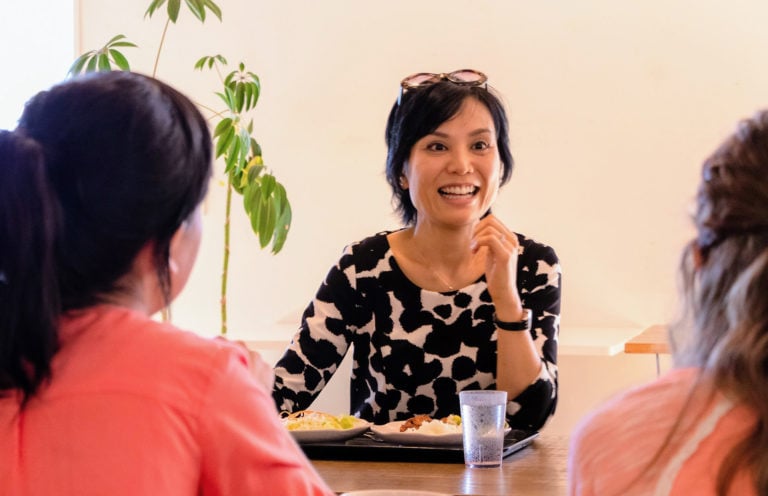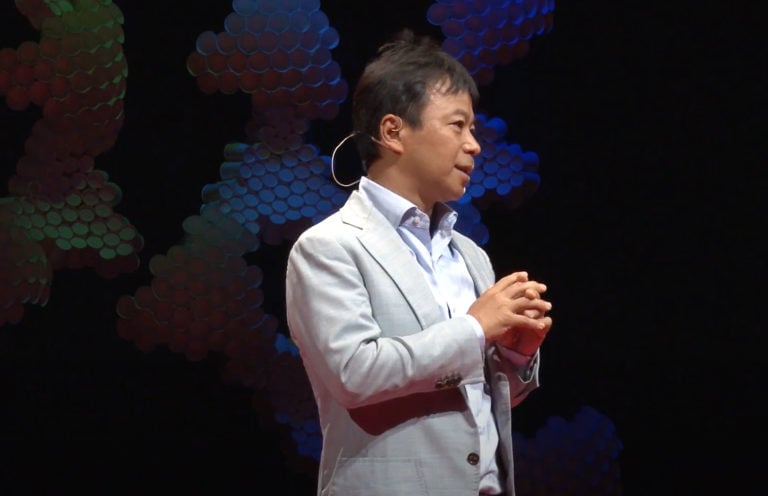This post is Part 4 of a full-length article about ISAK entitled Learning Through Shared Ideas, which was originally published in Japanese on Nikkei Business Online – May 25, 2015. To read the other 3 sections, click on the links below:
“Learning through Shared Ideas”
– Design Thinking Enables Students Improve Problem-solving Skills and Teamwork
• Part 1 – What is Important for a Head of School?
• Part 2 – What is The Best Time to Go to Bed?
• Part 3 – No One’s Opinion is Better Than Anyone Else’s
ISAK x IDEO Design Thinking Workshop!
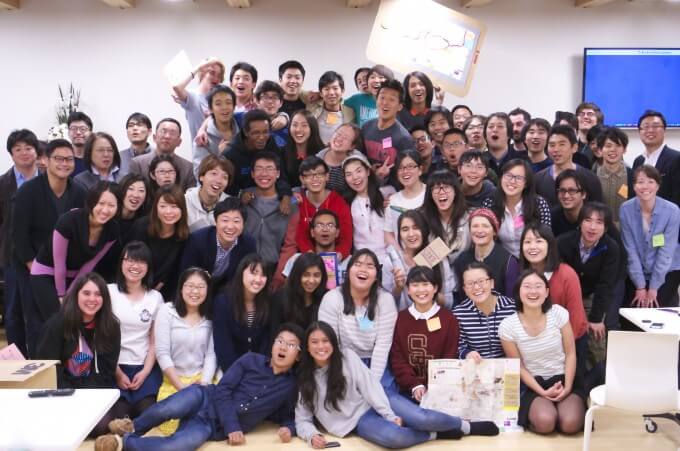
Design thinking proponent IDEO has an office in Japan; IDEO Tokyo’s mission is “Become a catalyst for change in Japan.” ISAK’s motto is “One life. Realize your potential. Be a catalyst for positive change.” In an interesting coincidence, both organizations have the concept of “catalyst” (change-maker) as a central theme. IDEO felt a strong connection to ISAK, which was aiming to develop the catalysts of the future.
As part of its support for ISAK, IDEO Japan participated in ISAK Summer School 2014, leading a lecture on design thinking for Summer School participants. After that, IDEO held a workshop for ISAK faculty and staff before the school opened, which was a huge success. On April 19, 2015, IDEO held another workshop for ISAK’s first class of students.
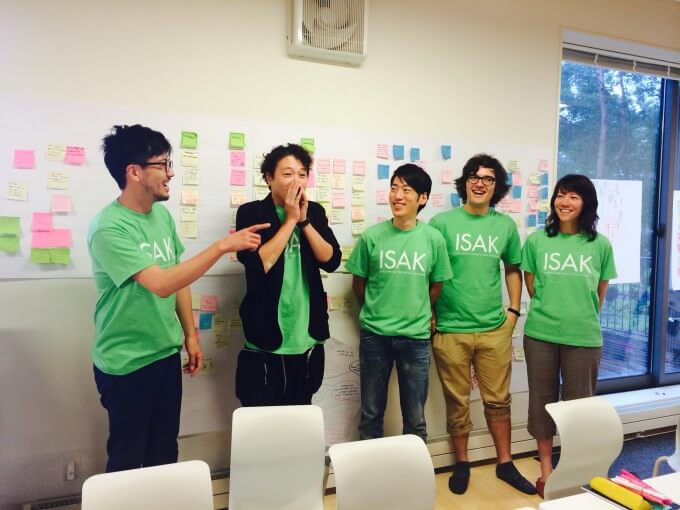
(IDEO Tokyo visited ISAK Summer School in 2014 to facilitate the Design workshop. Photo by ISAK)
The theme of the workshop was “Unlocking Karuizawa,” and focused on how to communicate the appeal of Karuizawa, home to ISAK, to the rest of Japan and the world, with an eye to the 2020 Tokyo Olympics. ISAK students were familiar with the design thinking process because it is part of the ISAK curriculum, but normally, their topics focus on familiar subjects such as dormitory or school life. The workshop’s broad theme was their first time to work on a large-scale prototype that connected them to the larger world.
One new element at the April workshop was the addition of adults who brought professional knowledge and experience. For the workshop, 16 adults from a variety of fields joined 36 students at the ISAK campus in Karuizawa.
4 Phases of Design Thinking
Design Thinking is a methodology that always starts by looking at people’s needs. The goal is to then create new innovations that play at the intersection of human desirability, technical feasibility, and business viability.
However, this is easier said than done. Kenichi Nonomura, director at IDEO Tokyo, remarks, “In most business situations, we often start by trying to determine the business model that will increase our profits by a certain amount, or figure out how we can sell the products developed by the R&D team. In other words, rather than start from a zero base, businesses are often just making improvements to maximize performance. Also, in an organization, there tend to be systems in place that put limits on creativity. Workers have to learn how to overcome that kind of mindset.”
In contrast, in workshops that IDEO has conducted around the world with students, IDEO staff members are always impressed by the open-minded thinking of participants. However, students do not have any real life experience, so they often do not know how to prototype their idea or understand what actions they need to take to move the project forward.
The ISAK x IDEO workshop was developed with the goal of achieving a synergistic effect by combining the creative thinking of students with the professional knowledge and experience of adults. Non-student participants included professionals from major corporations, trading companies, advertising agencies, international corporations and a variety of other businesses.
The workshop consisted of the following four phases. These represent the fundamental flow of design thinking.
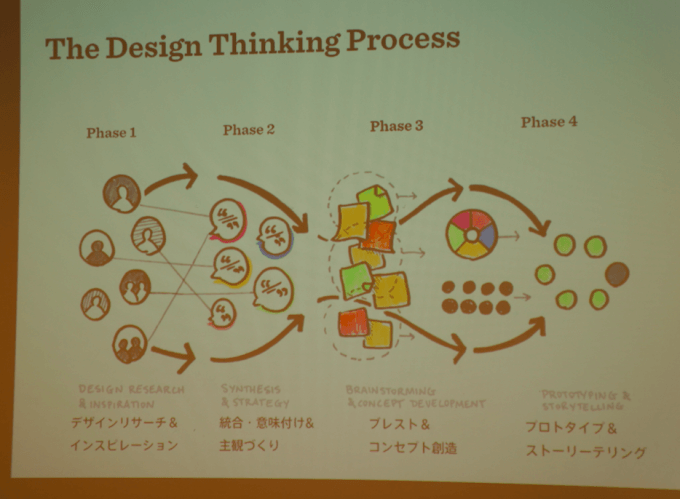
1) Design Research and Inspiration
Come up with as many thoughts as possible based on observations and interviews.
2) Synthesis and Strategy
Consider information and ideas based on what opportunities they might hold.
3) Brainstorming and Concept Development
Come up with further ideas that might be opportunities.
4) Prototyping and storytelling
Rather than just talking about the idea, prototype and test as quickly as possible, and explain the idea to others.
For the workshop with ISAK, eleven members from IDEO Tokyo came to the ISAK campus to function as facilitators, supporting the discussions. Adult and student participants were divided into ten teams and went through the design thinking process.
Problems Can Be a Source of Inspiration
The workshop was conducted in a single afternoon, but in the regular ISAK curriculum, this kind of design thinking process is carried out over several days. In order to get through the design thinking process during the workshop, the students conducted their research in advance.
The ten teams were assigned a topic related to Karuizawa, such as hospitality/lodging, mobility (getting to and getting around Karuizawa), food, tourism, and health/wellness. The students decided on their own how they would conduct their research.
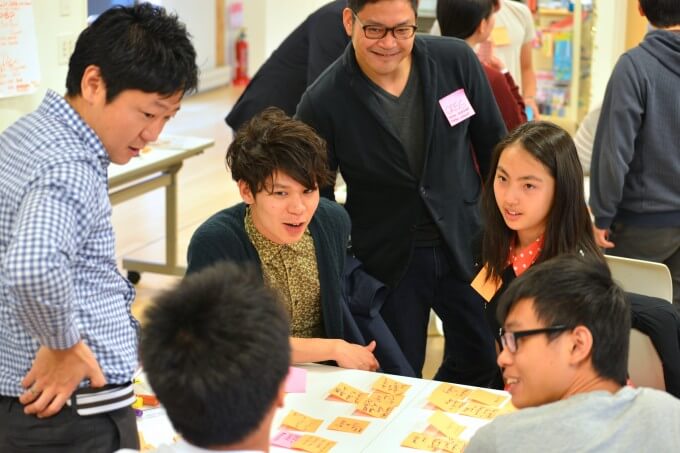
Based on their themes, the teams gathered data from various angles, collecting information such as age, gender, employment, where the visitors came from, their purpose of visiting Kaurizawa, transportation methods, and what they found appealing or inconvenient about Karuizawa.
The workshop began with the students in each team sharing their research results with the adults. After a discussion of the results with all team members, they began the process of turning their thoughts into something concrete.
Survey comments ranged from the positive (“Karuizawa is beautiful,” “Karuizawa has an outlet mall,” “I like the hot springs,” “The vegetables are delicious,”) to the negative (“It’s hard to get around without a car,” “The traffic in the summer is terrible,” “People only come for short visits,” “Most people only speak Japanese”). It was also pointed out that there is a difference between the people who have second homes in Karuizawa and those who are just short-term visitors.
By conducting interviews that covered all aspects of Karuizawa (rather than just researching Karuizawa’s positive side), students found more opportunities to draw out latent appeal. New points for discussion sprung up, such as “What is the real appeal of Karuizawa?” “Can we turn the weaknesses into strengths?” “Should we be trying to promote Karuizawa to people within the prefecture, or within Japan or overseas?” These types of issues led each team into deeper discussion.
The workshop ended with each team introducing its prototype to the other teams. Each team had three minutes to make a meaningful presentation. The idea developed by the team was photographed and edited into a visual, then presented as a slide show. Some groups also did skits to act out their ideas. Props that were used in the skits were hand-made out of cardboard and other materials.
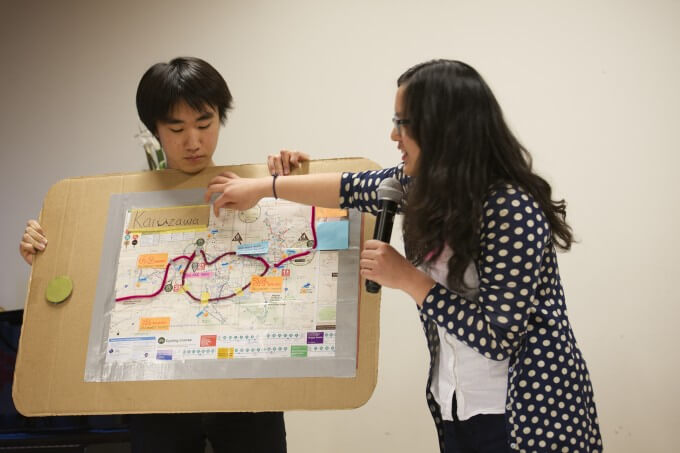
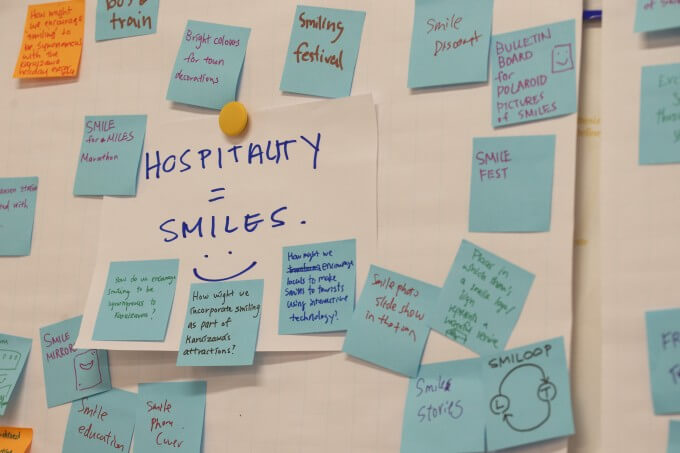
The team that researched the topic of hospitality came up with a “Smile Project.” This plan utilized an application for mobile phones and tablets. The key is a photo of a person smiling in Karuizawa. When the photo-taker uploads a photo of a smiling person to the application, a GPS function shows that location on the Internet. As photos are uploaded, a Karuizawa map is created from the places where visitors smiled.
The health/wellness team thought of a stamp card system to encourage repeat visitors to Karuizawa. Rather than a regular stamp card, the idea included coupons that could be used in different seasons, in order to encourage visits to Karuizawa throughout the year. Since visitors might lose a real stamp card, the team came up with a mobile phone application that would offer this function.
Ideas Become Reality with the Involvement of Others
Although the workshop lasted for just one afternoon, the results were fruitful for students and professionals alike. After the workshop, one male student commented, “At ISAK, our class of 49 students is always exposed to one another’s diverse ideas. However, for this workshop, we also got input from professionals, which gave us the chance to learn about different perspectives and connections.”
One of the professional participants, who quit a job at Yahoo in his late 20s and is now trying to start an electric airplane business, mentioned, “It was fun to be able to work with students as equals. I didn’t feel any difference in ability level with the students, and we were able to share ideas. I hope to continue supporting this community in the future.” He added, “If I had to mention an area for improvement, I would suggest that the students take time in the discussion to consider the issue from different angles.”
A female student at ISAK praised the IDEO members for their support. “With the IDEO facilitation, we didn’t just stop with one idea, but rather, were encouraged to come up with as many ideas as possible. That allowed us to consider many different ideas and choose the one that had the most weight and value.”
Early on, some students felt that it was difficult to tackle a topic as broad as Karuizawa, but in the end, they were able to develop prototypes and present their ideas to the other teams. Even some of the IDEO members expressed surprise that the students were able to come up with prototypes in such a short period of time. One of the key lessons of the workshop was that even if ideas are a bit rough, once they have been prototyped, it is possible to find a professional in that field who can turn the concepts into reality.
“Even for adults, I think it is difficult to turn ideas into something concrete. However, once you come up with an idea, you just need to find someone who can turn that into reality. I wanted the students to learn that if they understand how important it is to get others involved, they will be able to turn their ideas into reality and change the world,” said IDEO’s Nonomura.
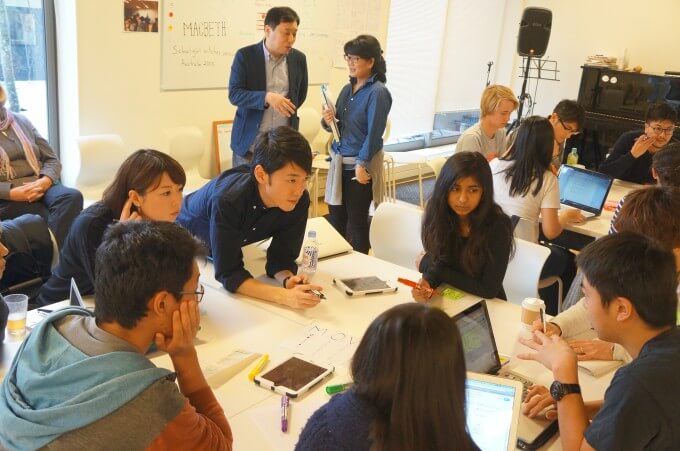
(Photo by Nikkei Business Online)
The Importance of Building on One Another’s Ideas
Michael Peng, co-founder of IDEO Tokyo, also shared his impressions of ISAK students. “I think that this is a very promising group of students. The way they think about problems is very creative, and they understand that there is no one right answer. I have led workshops at other schools and universities where the discussion becomes a debate about whose idea is better. Here, everyone is building on top of one another’s ideas.
In the real world, when you can work well with others is when you come up with the best solutions. ISAK’s students are able to work really fluidly with other people, and I think that will be a huge asset for them as they go on to college and the working world.”
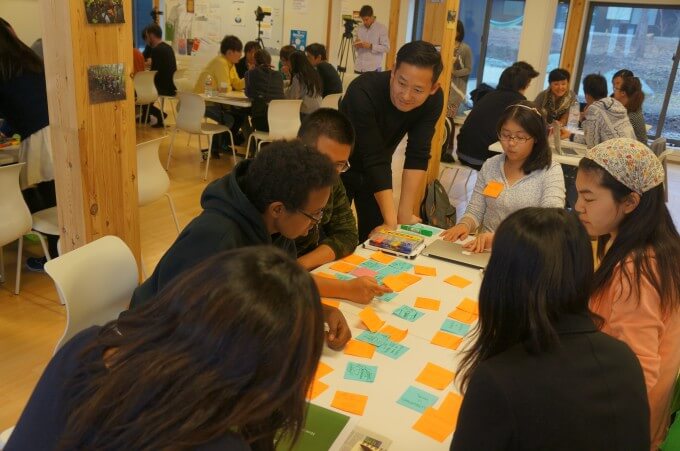
(Photo by Nikkei Business Online)
Professional participants also applauded the ISAK students. “I feel that the ISAK students are very mature compared to how I was in high school. I was impressed by how patient they were and how they listened carefully to others’ ideas and opinions, but were also not afraid to voice their own opinions.” (Early 30s, designer)
“There are so many reasons why I was impressed by the ISAK students. First, they did a tremendous amount of research prior to the workshop. Next, they were very enthusiastic about the workshop, and kept up their energy. Also, they were extremely professional, from giving a warm welcome to all of the adult participants to working well with us in the teams. Finally, they were very eager to learn. I am really thrilled that I was able to participate in such an exciting project and spend the day with the ISAK students.” (Early 30s, renewable energy department, trading company)
It is likely that the ISAK x IDEO workshop will contribute to the continued growth of ISAK’s first class of students. Shortly, another fifty students will be joining these dependable first-year students on the Karuizawa campus.
This post is Part 4 of a full-length article about ISAK entitled Learning Through Shared Ideas, which was originally published in Japanese on Nikkei Business Online – May 25, 2015. To read the first three sections of the article, click on the links below:
・PART 1: What Is Important for a Head of School?
・PART 2: What Is the Best Time to Go to Bed?
・PART 3: No One’s Opinion Is Better Than Anyone Else’s
About Nikkei Business Online:
NBO is an online platform providing compelling original content to help guide top and middle managers of companies in Japan. The website has 1.62 million subscribers and receives 30 million page views each month.
※本記事は、日経BP社同意のもと、日経ビジネスオンラインの掲載記事をISAKが翻訳したものです。無断転載/複製は禁止されています。
